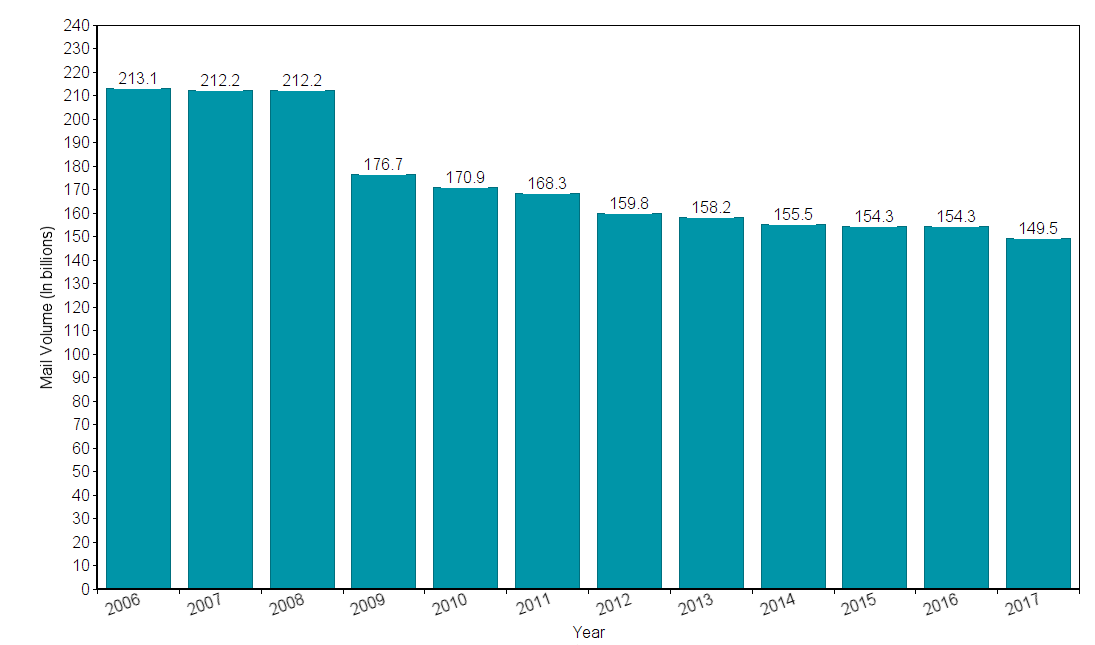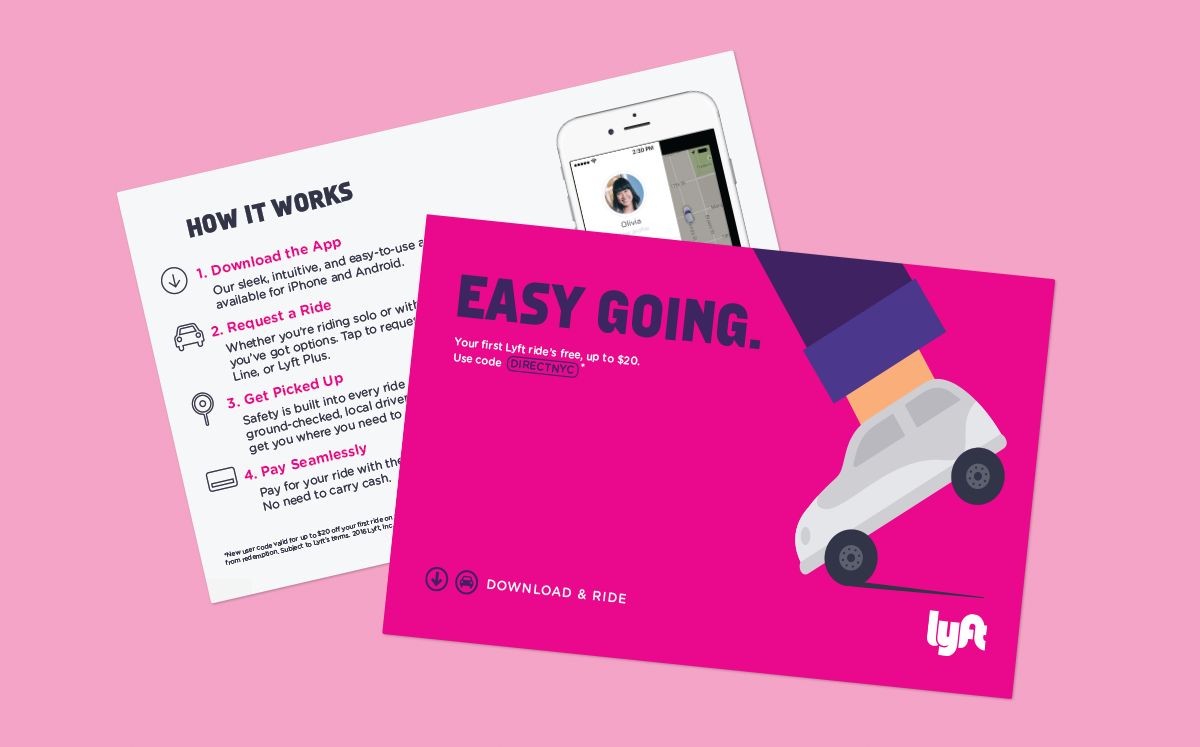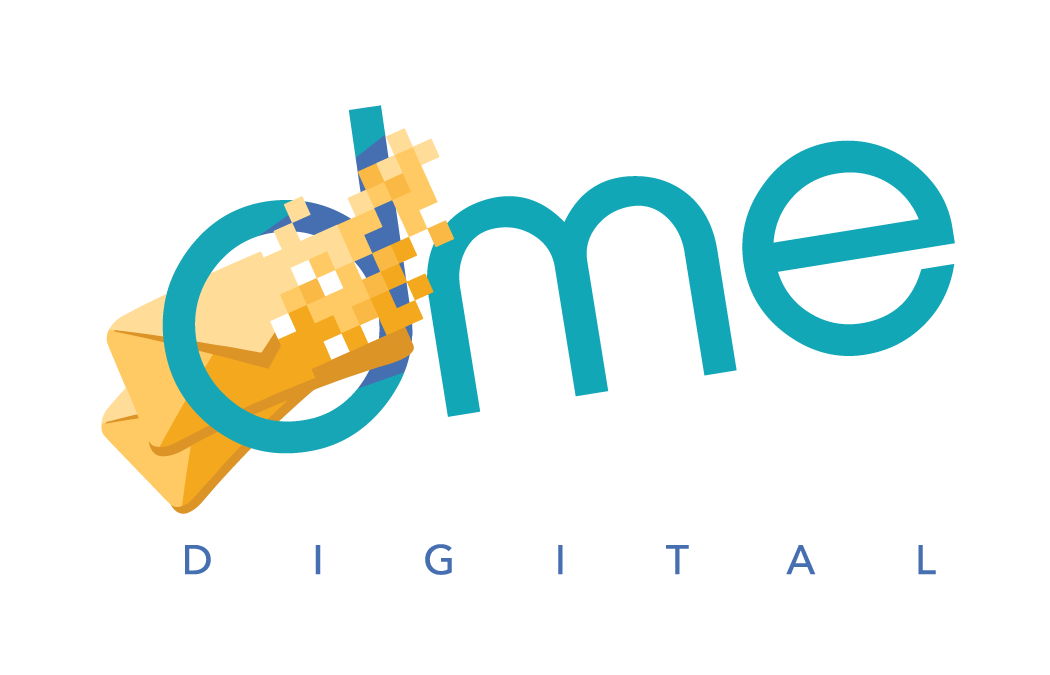As 2019 approaches, it’s time for the annual tradition: shouting into the void the same question we ask every year: “Is direct mail marketing dead yet?”
By this point, it’s considered conventional wisdom that direct mail can’t possibly compete with digital.
But that so-called wisdom is actually incorrect.
In fact, the direct mail world is very much alive: according to the DMA going into 2018, 46% of marketers were keeping their direct mail budgets the same, with another 35% saying they would be increasing their budgets.
That’s a solid 81% who were either keeping their budgets the same or growing last year – hardly a case for a dying industry, right?
All evidence points to the same trends holding true for 2019.
Direct mail didn’t die this year, and it won’t die next year either.
But – and this is important – it will be changing. It may be slow at first, but over the next year or two, expect to face challenges in marketing that are the result of the digital revolution.
Those challenges, however, offer as much opportunity as they do risk. Direct mail won’t be in danger, so long as it continues to adapt.
So what does the future look like for direct mail?
A Case for Direct Mail
If 81% of marketers are either staying at their current budget or increasing, they must have some reason to do so, right?
They absolutely do.
Direct mail statistical data doesn’t update frequently, usually coming directly from the DMA. Recent years’ publications all point to the fact that direct mail, compared to all other forms of marketing, has the best response rate.
How is that possible?
When you look at mail data, you quickly realize that mail volume is decreasing. Hard.
In 2006 there were 213.1 billion pieces of mail sent out. Compare that with 2017, when the USPS reported 149.5 billion pieces – that’s a decrease of 29.85%.
And yet, in the direct mail world, that same period saw an increase in response rate of 54.55% for house lists, and 70.59% for prospect lists. Additionally, the proportion of mail volume made up of marketing materials increased.
What this means is that the decrease in mail volume was not coming from direct mail. Marketing materials increased in proportion, meaning they either did not decline in volume or declined at a much slower rate.
This makes sense, after all, since many bills and documents are now paperless. But there are a lot of reasons direct mailers haven’t gone completely paperless, and we’ll talk about that a little later.
This is also consistent with the data surrounding direct mail budgets. If budgets are growing or staying the same, direct mail marketing materials aren’t on the chopping block.
The best case for direct mail comes from the data. That data shows that marketers themselves aren’t afraid of their industry collapsing underneath them.
If anything, it shows a newfound confidence that direct mail marketers haven’t had in decades.

According to the DMA industry factbook, ROI on direct mail averages 29% per household.
Direct mail campaigns vary in cost per piece, but 10,000 postcards with shipping costs included may cost anywhere from 20 to 36 cents per piece when all costs are added together.
While it’s true that the price tag is higher than digital marketing, consider the much higher response rate from direct mail marketing. People are more likely to respond to a piece of mail than they are to an ad on Google or Facebook.
It would seem to be a no-brainer to switch to a medium that reaches more people for less money, but the reality is that direct mail marketing has an intrinsic value that digital doesn’t currently threaten.
To put the nail in the coffin of the “mail is dead” argument, we only need to look at how the newest generation of consumers are responding to direct mail:
Millennials get a lot of flak for alleged negative traits, as well as a reluctance to engage with marketing. But the reality is that, according to the DMA, in 2016 alone the response rate for direct mail of 18-21 years olds doubled.
Compared to older adults, millennials are actually more likely to read their mail. 84% of young adults read their mail, most of them thoroughly.
The key distinction is that they aren’t reading it the same way.
Younger audiences respond far better to technology such as QR codes, AR and other techniques to engage customers. They are also, in general, more likely to suffer from ad fatigue online. That’s a big factor in why it’s much easier to break through with direct marketing.
In fact, around half of millennial customers completely ignore digital ads. Add on the fact that around 30% of internet users have ad blockers enabled and you have a huge population that simply can’t be reached with digital marketing.
For a large section of the millennial population, direct mail is the best way to break through the noise and have your offer heard. But you can’t send the same mail that you’ve been sending for years, at least not if you want to be noticed.
But engaging with the millennial crowd means ensuring a long and fruitful relationship with the newest consumer generation for decades to come.
Embracing the Mail of the Future
How do you engage with an audience who grew up online? And how do you break through the marketing noise to older audiences as well?
One way is to incorporate digital tech with your direct mail campaigns. In fact, we made a post about this exact subject not too long ago. Video screens, QR codes, PURLs and more are all ways you can add a novelty factor to engage customers in-person and online.
Imagine you open your mailbox and find an oversized mailer from your local animal shelter. You open it up and…
Oh, what’s this?
There’s a wafer-thin LCD screen looking at you. It flashes on, and suddenly you’re looking at a video of the shelter’s newest kittens up for adoption.
That’s pretty cool, isn’t it?
You’re certainly going to remember it more than just a glossy brochure (not to knock glossy brochures or anything – they’re just not kitten videos).
Or you can have a QR code that your customers scan to take them directly to the same video on the shelter’s website.
Needless to say, video marketing (as an example) is hot right now. And now you can use video marketing in your direct mail campaigns. Admittedly, the cost per piece of a video mailer is much higher than traditional mail, but it’s also an incredible opportunity to create a lasting impression on your audience.
For any direct mailer, there are cost-effective ways of making use of digital marketing without replacing your mail. If anything, your mail campaigns will be even stronger, particularly with younger audiences.

Marketers have talked on end about one-to-one marketing for years now, but with a campaign at scale like mail, how can you do this?
The obvious answer, that many printers and agencies already use, is variable digital printing. In fact, by 2020, 73% of direct mail is predicted to be made with digital printing.
Digital printing lets you make minor variations between pieces and prints, letting you truly create a personalized piece of mail for each customer. Names, dates and addresses are customizable – along with images, copy and content.
You no longer need to send out generic letters en masse to “Our neighbors” or “Resident” when you do your mail.
One Word: Trust
Trust is a favorite word in marketing today. And that’s a trend to follow into 2019 and beyond.
Brand image has always been a major factor in marketing, sure, but ad oversaturation is worse than ever.
Even as a marketer you know that it can be annoying to wade through a dozen intrusive ads just to get what you want.
Younger audiences are hardest hit by this perception. Brand loyalty and trust in companies’ messages is decreasing. Younger generations are more likely to be suspicious of businesses’ intentions – and that includes their ethics, their messaging and their products.
This is in large part why influencer marketing has taken off. If you’re a relatively unknown company, what better way to introduce your service than through the trusted voice of a favorite podcaster, celebrity, or Instagrammer?
Direct mail is not as vulnerable as digital marketing when it comes to trust; most adults consider it a reliable source of advertising. All the same, it’s important to break through the ad-skepticism among customers.
How does a direct mail marketer do this?
Well, if you can’t afford a basketball superstar’s face on your mail, there are certainly other ways to create a sense of trust with customers:
A Nielsen study in 2015 showed that customers found reviews, brand websites and word-of-mouth to be the most reliable sources of information. Advertisements, however, were not in the top three.
But that doesn’t mean you have to give up the ghost on direct mail and switch to lucrative Instagram sponsorship deals.
Consider adding testimonials to your mail. Or photos of the client’s founder, team or some other personal touch.
Carefully articulate the brand voice, mission and message. It’s about framing more than medium. Dropping a decontextualized ad in someone’s mailbox worked better in the past, but now it’s about branding and reputation management.
Losing the brand game means losing the trust of a large segment of the future consumer population, so continue to refine your mail’s message with future clients.
Omni-Channel or Bust
Of course, at DME Digital we never advocate for using one channel alone. It’s sort of our thing.
Direct mail is powerful, without a doubt. But it’s becoming increasingly difficult to market to someone with just one channel.
That’s why we push digital integrations so passionately – we don’t believe digital will replace direct, but rather that the two are a perfect pair for the future of marketing.
To illustrate, digital and direct paired together can increase conversions by 28% compared to either channel alone.
It’s very difficult to guide someone through your marketing funnel with just one channel. You can introduce your product, client or service online with a Facebook ad, then send them an engaging offer via mail. Perhaps that offer pushes them back online to your client’s website, or in store for a purchase.
Either way, the point is to ensure the customer is aware of the brand, aware of the offer and is pushed to convert.


Direct mailers designed and courtesy of Share Local Media.
Perhaps the most telling sign of omni-channel’s success is the total flipping of the script when it comes to online-only retailers.
If you’ve been online at all in the past few years, you’re probably at least aware of companies like Harry’s, Away or Casper.
These brands started as strictly digital businesses, selling their products online with intensive digital advertising campaigns (and incredibly prolific podcast sponsorships).
Here’s the crazy thing: they’re doing direct mail now.
The difference, at least compared to big-box stores, auto dealers and many other traditional advertisers is that they push you to visit their website. While many of these companies are opening brick-and-mortar stores (more proof that omni-channel is king) they still do most business online.
In large part this is pushback against the oversaturation online, especially with email marketing. Many of these brands are targeting younger audiences – so the fact that they’re using direct marketing should emphasize how important this channel is to reaching millennials as well as older adults.
How to Prepare for the Future, Today!
2019 will see the continuation of the same trends we’ve been talking about for years in marketing. Mail volume is decreasing, but direct mail as an industry is safe – overall.
But as with any industry, it needs to adapt to new realities. Trust-building, brand messages and marketing to younger audiences are key to a successful future in direct marketing.
Expect to innovate your mail itself, incorporating new technologies such as videos, apps, AR and more.
While direct mail is going strong, there’s no denying that digital marketing is the hot topic right now. But you can turn that into an advantage for yourself – as long as you have the right partner that is. DME Digital offers digital add-ons to direct mail to help keep your mail ahead of the curve. Check out our services here!
If you take time to prepare for the future now, you won’t be facing any surprises next year – or even the next few years after that.
What are your direct mail plans for 2019? Have you had success with any of these strategies? Let us know in the comments!












Leave a Reply